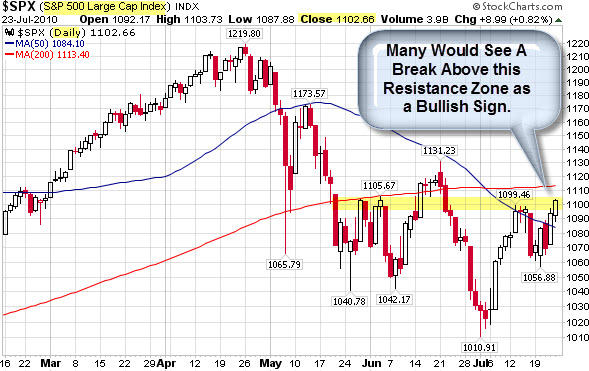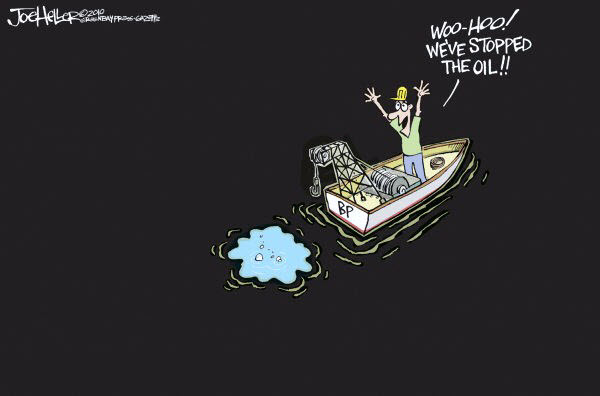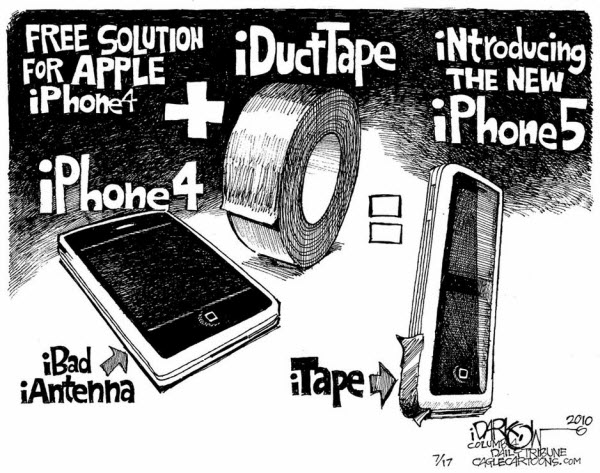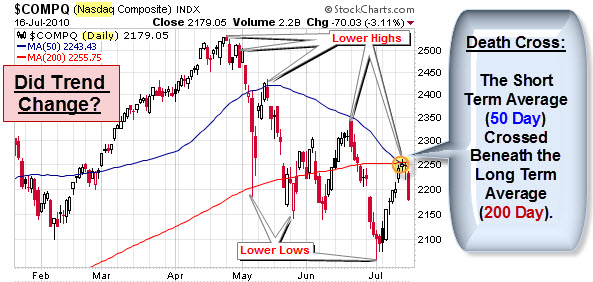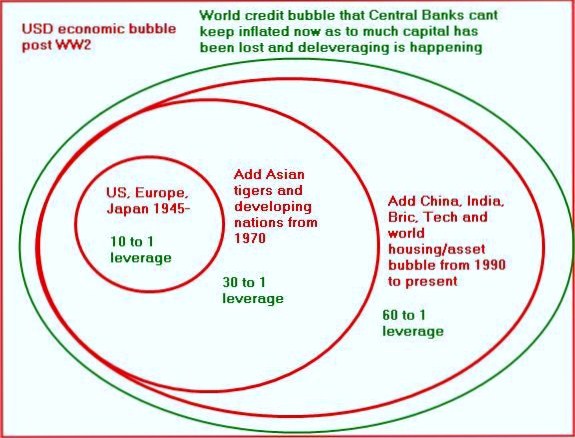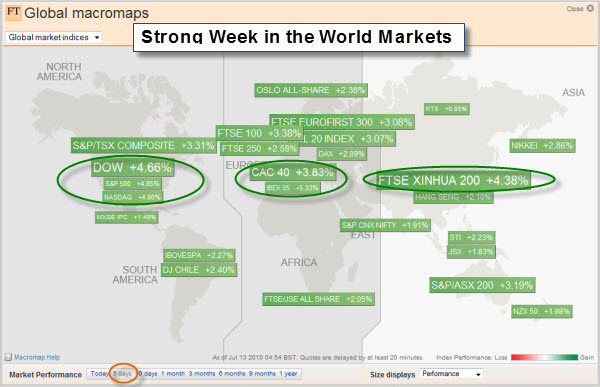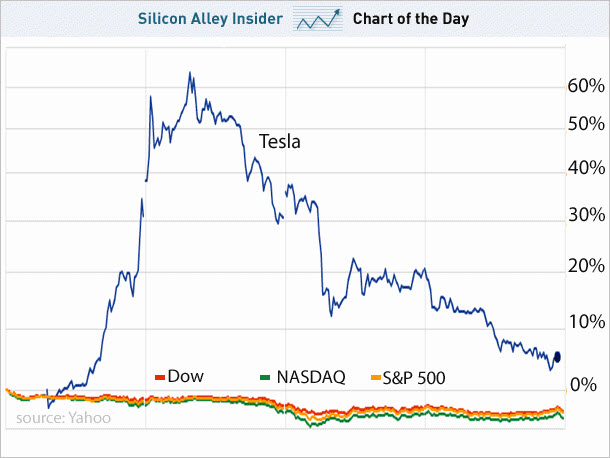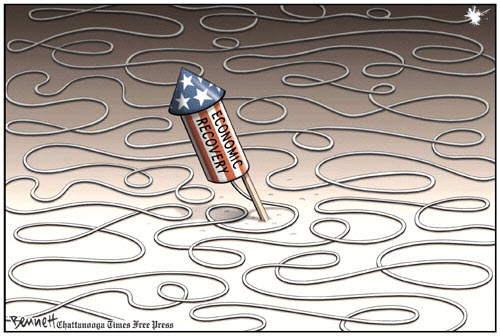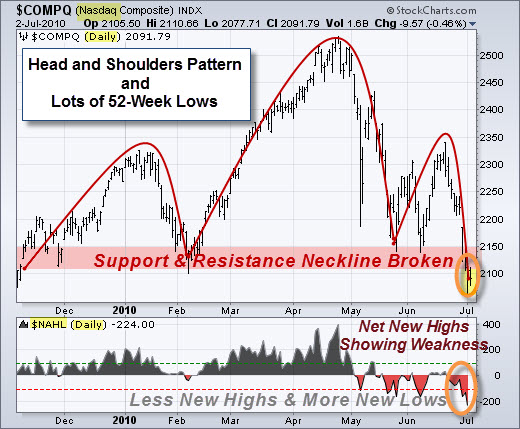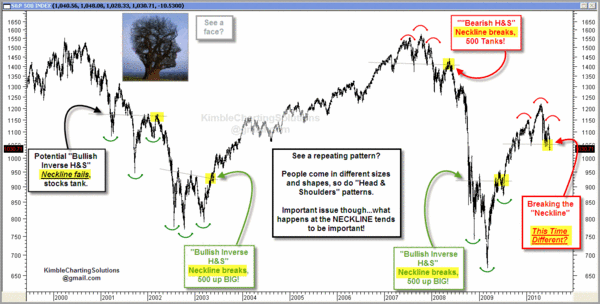It was a strong week for the markets. Normally, to get a sense of what's happening, I focus on the U.S. equity markets. This week, however, I thought it made sense to start with a look at emerging markets around the world. These markets are often referred to as BRICs.
Emerging Markets Lead Stock Rally.
At this point, foreign stocks are leading the U.S. stock market higher. Here is a chart showing that Emerging Market iShares recently broke above its June high. Moreover, after breaking above the down-trend since April, it successfully re-tested that line (from above) and bounced higher. From a technical analysis perspective, those are bullish signs.
Here in America, it is earnings season, and companies have been reporting better news than most expected. The economic news hasn't been stellar; but the markets have held up well. This chart shows the S&P 500 Index at the top of hotly contested resistance level.
Many would take a sustained move above the 1120 level as a strong bullish sign.
With that said, business expansion is dragging and slowing the economic recovery, and it
seems everyone is searching for reasons.
Debt Overhang.
In his new paper, Federal Reserve Bank of Cleveland researcher Filippo Occhino says a contributing factor may be something called debt overhang. Simply put, when companies have too much debt it discourages them and their investors from taking on projects because the debt consumes any profits the investors might make, even in situations when the investment raises equity in the company.
Watch the Debt Overhang Video from the Cleveland Fed.
A different slant on the debt problem is illustrated below.
Business Posts Moving the
Markets that I Found Interesting This Week:
- What VIX Futures Tell Us About October: Is Something Really Scary Coming? (FT Alphaville)
- Goldman Sachs' Global Leading Indicator Rolls Over. (PragCap)
- Goldman Sachs $550 Million Fine Amounts to Only One Week's Trading Profits. (Citywire)
- Indian Court Rules that Hindu Gods Can't Trade Shares. (CrossingWallSt)
- What’s Really Going on in the VC Industry & What Does it Mean for Startups? (BothSides)
- More Posts
Moving the Markets.
Lighter Ideas and
Fun Links
that I Found Interesting This Week
- Microsoft Releases Beta of Upgraded Security Essentials. (PCWorld)
- Are You Part of the Botnet Army? What You Can Do To Protect
Yourself. (NewNewInternet) - Would You Eat Synthetic Meat? It Will Probably Taste Like Chicken. (The Week)
- Perdue recalls 90,000 pounds of chicken nuggets that may contain pieces of plastic. (CNN)
- Why a Scientist is Challenging Whether Gravity Exists. (NYTimes)
- More
Posts with Lighter Ideas and Fun Links.


